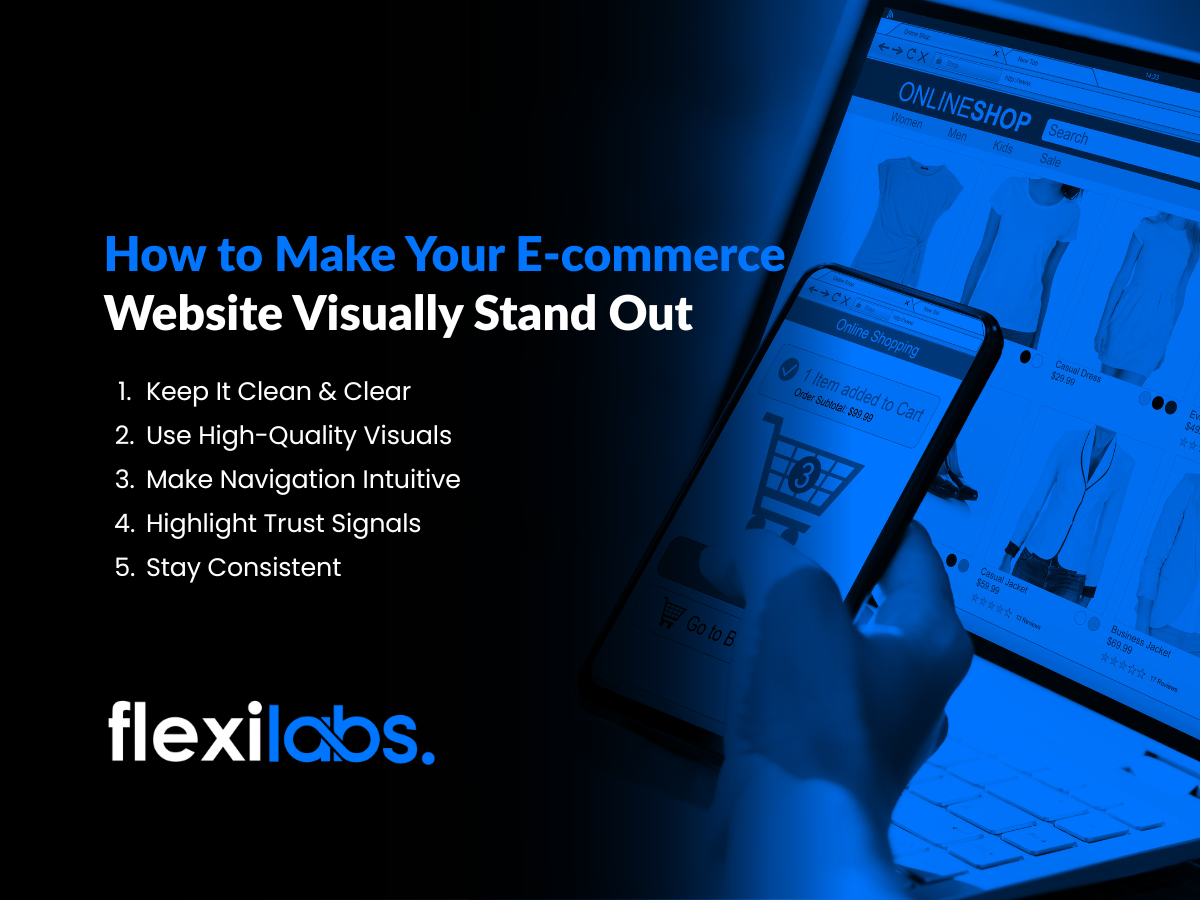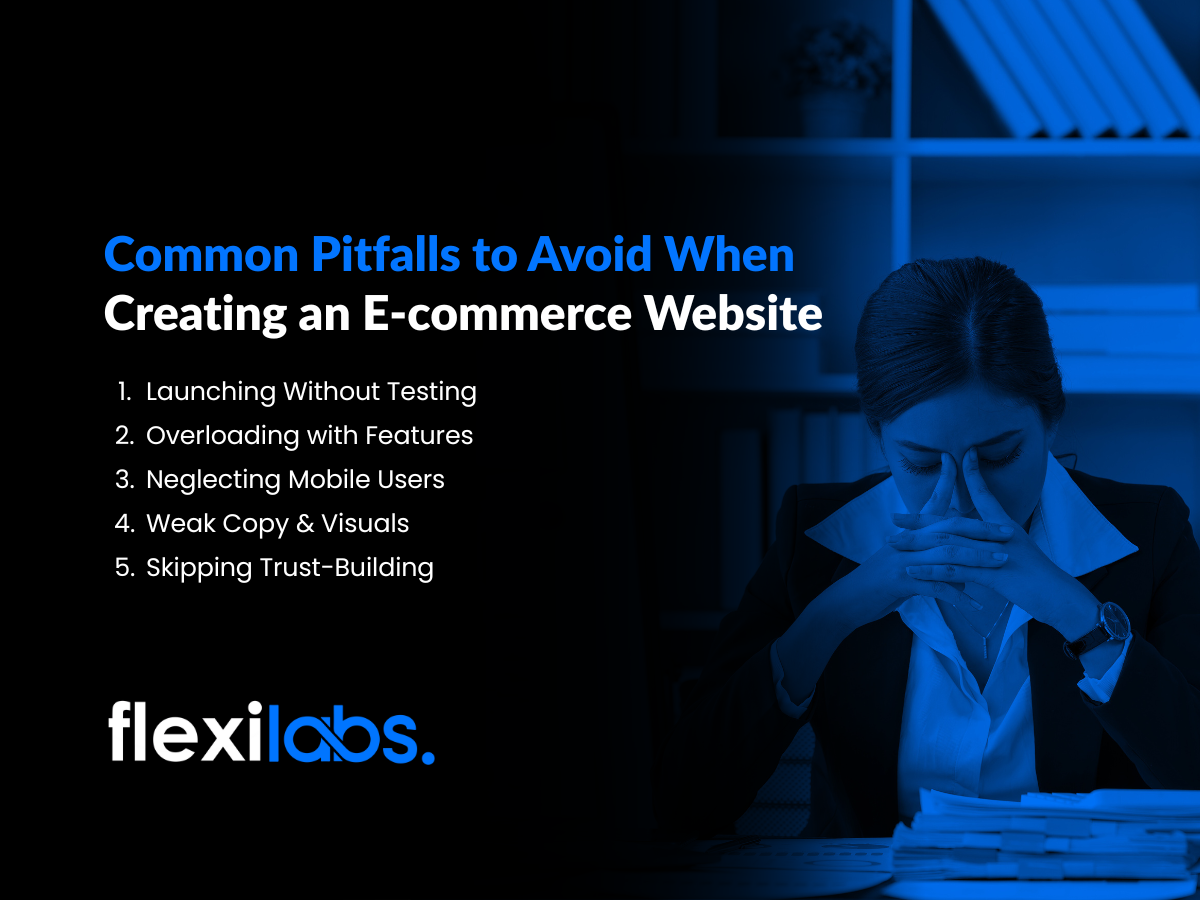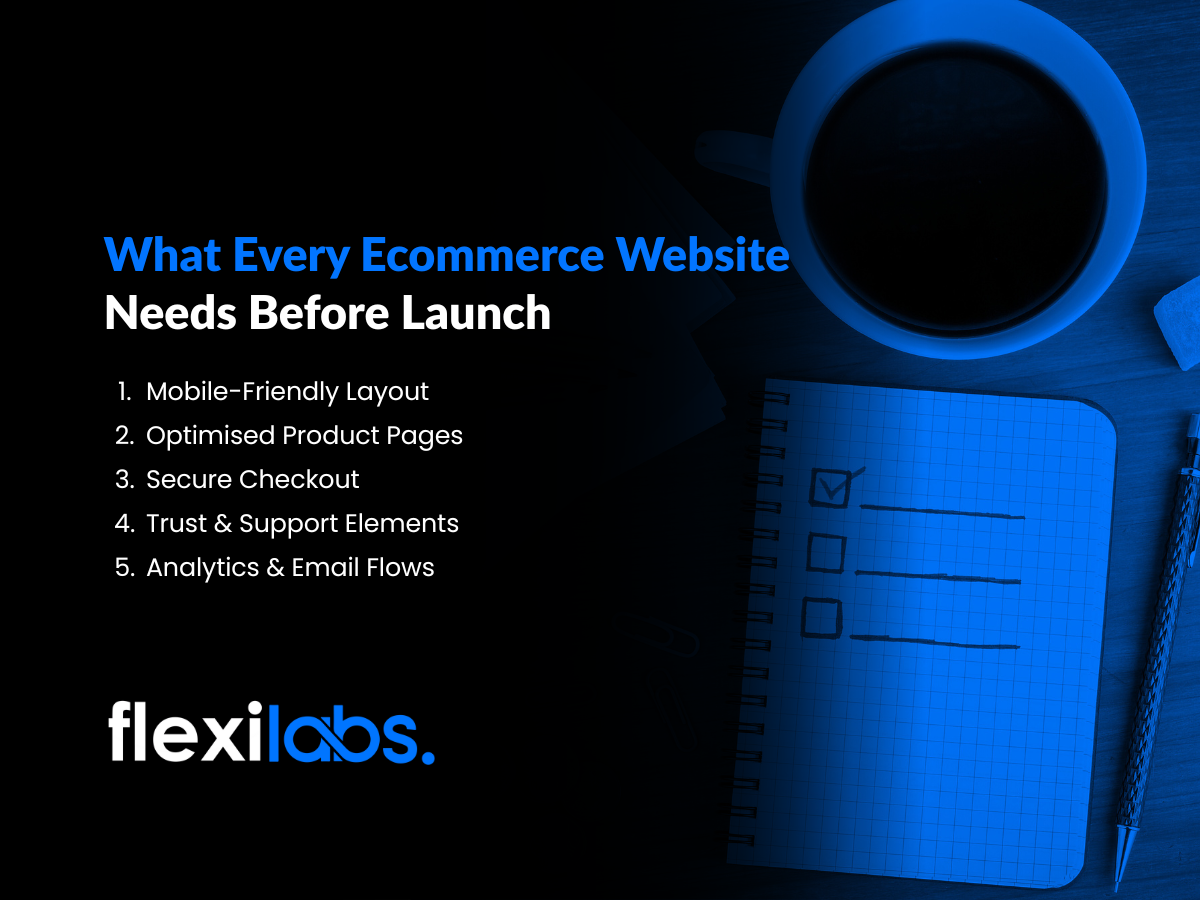Creating an ecommerce website isn’t just about going live—it’s about building something that can keep up as you grow. Startups move fast, so your site needs to be flexible, reliable, and ready for AI-powered marketing and what’s next. The stronger the foundation, the easier it is to scale without stress.
From layout to tech stack, every choice plays a role in how your business takes shape online. A site that looks sharp, runs smooth, and builds trust sets you apart from the crowd. With the right setup, you’re not just selling—you’re creating a brand people remember.
How to Make Your Ecommerce Website Visually Stand Out
Design is more than just how it looks. It guides your customer from discovery to checkout. These key principles help your website build trust and encourage action.

1. Keep It Clean & Clear
Cluttered pages with too many colours, pop-ups or banners can quickly overwhelm your visitors. A clean and tidy layout keeps the focus on your products and makes the shopping experience feel smooth. A simple design looks more professional and encourages users to stay longer.
2. Use High-Quality Visuals
Crisp, well-lit photos and short product videos help customers imagine using your product in real life. Blurry or stretched images make your website feel unprofessional and may cause people to leave without buying. Quality visuals send the message that your brand is credible and worth their time.
3. Make Navigation Intuitive
Customers should be able to find what they need without thinking twice. Use simple menus, a visible search bar and filters that make browsing quick and easy. When navigation feels effortless, people are more likely to keep exploring and complete their purchase.
4. Highlight Trust Signals
Adding reviews, testimonials, return policies and security badges helps build trust with new visitors. These elements show that you are transparent, reliable and serious about customer service. Even small trust signals can be the deciding factor between buying and bouncing.
5. Stay Consistent
Consistency in fonts, colours, tone and layout helps your brand feel strong and intentional. If your site looks mismatched or disorganised, customers may second-guess its reliability. A consistent design experience makes everything feel more polished and easier to trust.
Common Pitfalls to Avoid When Creating an Ecommerce Website
Even with the best intentions, simple missteps can hold your ecommerce site back. Avoiding these common mistakes can save you from lost sales, slow load times, and customer drop-offs.

1. Launching Without Testing
Launching without testing on real devices and browsers is one of the easiest ways to lose potential customers. What looks great on a desktop might break or behave badly on a phone or tablet. Testing properly before launch helps you avoid poor first impressions and prevent avoidable errors.
2. Overloading with Features
Trying to add every possible plugin or tool from the start often backfires by slowing down your site and making it harder to use. It’s better to focus on essential features that directly support your business goals and add others gradually. A clean, simple site is faster, easier to navigate, and keeps visitors engaged.
3. Neglecting Mobile Users
With most online shoppers using mobile devices, ignoring mobile optimisation is a costly mistake. Your site needs to load quickly and work smoothly on small screens to keep users interested. If mobile users struggle to browse or check out, you risk losing a large portion of potential customers.
4. Weak Copy & Visuals
Generic product descriptions and low-quality images don’t inspire confidence or interest. Clear, benefit-driven copy helps shoppers understand why they should buy, while sharp, professional photos showcase your products at their best. Investing time in good content and visuals builds trust and boosts conversions.
5. Skipping Trust-Building
Leaving out important trust signals like return policies, contact details, and security badges can make your site seem unreliable. These elements reassure customers that their purchase is safe and that help is available if needed. Without clear trust indicators, visitors may hesitate or abandon their shopping carts.
What Every Ecommerce Website Needs Before Launch
Launching a website means making sure everything works well for customers across all devices. It’s about creating a smooth experience that encourages people to stay, trust, and buy.

1. Mobile-Friendly Layout
Your ecommerce website must be fully responsive and look great on all devices, especially mobiles. Most customers will browse and shop using their phones, so the mobile experience needs to be seamless. Always test on real devices, not just browser previews.
2. Optimised Product Pages
Each product page should include a clear, benefit-focused description that speaks to your customer. Add proper meta titles, image alt text, and relevant keywords to support search visibility. Sharp images, clear pricing, and persuasive CTAs help drive conversions.
3. Secure Checkout
Use HTTPS encryption and trusted payment gateways to keep transactions safe, an essential step in securing your startup’s ecommerce presence. Include guest checkout to reduce friction for first-time buyers. Show shipping fees, return policies, and delivery timeframes upfront to avoid surprises.
4. Trust & Support Elements
Display customer reviews, satisfaction guarantees, and clear return policies to build credibility. Make it easy for users to find your contact details or reach out for help. These trust elements reduce hesitation and support smoother buying decisions.
5. Analytics & Email Flows
Have Google Analytics and relevant tracking tools set up before launch to capture user data from day one. Automate email flows like welcome series, cart recovery, and order confirmations to keep users engaged. These small actions make a big difference in retention and revenue.
Final Thoughts
Launching a successful ecommerce site means creating a smooth, trustworthy experience that keeps customers coming back. Smart design choices and reliable performance build confidence and help your brand stand out from the crowd. Paying attention to detail early on saves you from headaches and lost sales later.
Making sure your site works well on all devices and offers a hassle-free checkout keeps shoppers happy and more likely to buy. Using insights and automated emails to stay connected strengthens customer loyalty over time. Nail these essentials, and your ecommerce business will be ready to grow and thrive for the long haul.
Ready to build an ecommerce website that stands out and scales with your startup? Contact us today and let’s build it right, together.

